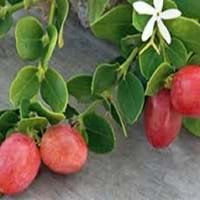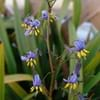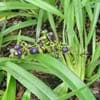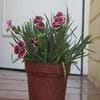Life Span
Perennial
Perennial
Type
Tender Perennial
Fruit
Origin
Mexico
Central Asia, Southern Asia, Western Ghats, India
Types
Not Available
congesta, paucinervia
Number of Varieties
Not Available
Habitat
Temperate Regions, Tropical regions
Fertile bottom land, moist forests, Temperate Regions, Tropical Forests
USDA Hardiness Zone
9-15
Not Available
Sunset Zone
H1, H2, 18, 19, 20, 21, 22, 23, 24
Not Available
Habit
Cushion/Mound-forming
Upright/Erect
Minimum Height
Not Available
Minimum Width
Not Available
Flower Color
Yellow, Orange Red, Black
Pale White, White
Flower Color Modifier
Bicolor
Bicolor
Fruit Color
Not Available
Purple, Black
Leaf Color in Spring
Green
Green
Leaf Color in Summer
Green
Green
Leaf Color in Fall
Green
Green
Leaf Color in Winter
Light Green
Light Green
Plant Season
Summer, Fall
Spring, Summer, Fall
Sunlight
Full Sun, Partial Sun
Full Sun, Partial Sun, Partial shade
Type of Soil
Clay, Loam, Sand
Loam
The pH of Soil
Acidic, Neutral, Alkaline
Acidic, Neutral, Alkaline
Soil Drainage
Well drained
Well drained
Bloom Time
Late Spring, Early Summer, Summer, Late Summer, Early Fall, Fall, Indeterminate
Spring
Tolerances
Drought
Drought
Where to Plant?
Container, Ground, Pot
Ground
How to Plant?
Seedlings, Transplanting
Seedlings, Stem Cutting
Plant Maintenance
Medium
Medium
Watering Requirements
Average Water Needs, Do not water frequently, It cannot sustain wet-feet, Water when soil is dry
Keep the ground moist but not water-logged
In Summer
Lots of watering
Lots of watering
In Spring
Moderate
Moderate
In Winter
Average Water
Average Water
Soil pH
Acidic, Neutral, Alkaline
Acidic, Neutral, Alkaline
Soil Type
Clay, Loam, Sand
Loam
Soil Drainage Capacity
Well drained
Well drained
Sun Exposure
Full Sun, Partial Sun
Full Sun, Partial Sun, Partial shade
Pruning
Cut or pinch the stems, Prune in spring
Prune if you want to improve plant shape, Remove dead leaves
Fertilizers
All-Purpose Liquid Fertilizer
Compost, fertilize in growing season
Pests and Diseases
Red blotch
Aphids, Earwigs, Insects, Mildew, Red blotch, Rust, sawflies
Plant Tolerance
Drought
Dry soil, Heat And Humidity
Flowers
Showy
Insignificant
Flower Petal Number
Single
Single
Foliage Texture
Medium
Medium
Foliage Sheen
Glossy
Matte
Attracts
Hummingbirds
Birds, Butterflies, Fruit Bats
Allergy
no allergic reactions
Eczema, Mouth itching, Throat itching
Aesthetic Uses
Beautification, Bouquets, Landscape Designing, Showy Purposes
Not Available
Beauty Benefits
Not Available
good for lips, Remove blemishes
Environmental Uses
Air purification
Air purification, Food for animals, Food for birds, soil stabilisation
Medicinal Uses
Not Available
Anemia, Diuretic, Potassium, Rich in Iron, Vitamin C
Part of Plant Used
Flowers, Leaves
Fruits, Leaves
Other Uses
Economic Purpose, Used as Ornamental plant, Used for producing cooking oil
Added to salads, Cosmetics, Culinary use, Used as a nutritious food item, Used As Food, Used for its medicinal properties
Used As Indoor Plant
Yes
No
Used As Outdoor Plant
Yes
Yes
Garden Design
Bedding Plant, Container, Mixed Border, Tropical
Edible, Fruit / Fruit Tree, Hedges
Botanical Name
CUPHEA cyanea
Carissa carandas
Common Name
Mexican Cigar, Firecracker plant
Black Currant
In Hindi
सिगार प्लांट
करोंदा, कालि मैना
In German
Zigarettenblümchen
Carandas
In French
Cigar usine
karondas
In Spanish
cigarro Planta
karondas
In Greek
πούρο φυτών
karondas
In Portuguese
charuto de Plantas
karondas
In Polish
Cigar roślin
karondas
In Latin
Planta Cigar
karondas
Phylum
Tracheophyta
Magnoliophyta
Class
Magnoliopsida
Magnoliopsida
Order
Myrtales
Gentianales
Family
Lythraceae
Apocynaceae
Clade
Angiosperms, Eudicots, Rosids
Angiosperms, Asterids, Eudicots
Tribe
Not Available
Not Available
Subfamily
Lythroideae
Not Available
Number of Species
Not Available
Season and Care of Cigar Plant and Karonda
Season and care of Cigar Plant and Karonda is important to know. While considering everything about Cigar Plant and Karonda Care, growing season is an essential factor. Cigar Plant season is Summer and Fall and Karonda season is Summer and Fall. The type of soil for Cigar Plant is Clay, Loam, Sand and for Karonda is Loam while the PH of soil for Cigar Plant is Acidic, Neutral, Alkaline and for Karonda is Acidic, Neutral, Alkaline.
Cigar Plant and Karonda Physical Information
Cigar Plant and Karonda physical information is very important for comparison. Cigar Plant height is Not Available and width Not Available whereas Karonda height is 120.00 cm and width 120.00 cm. The color specification of Cigar Plant and Karonda are as follows:
Cigar Plant flower color: Yellow, Orange Red and Black
Cigar Plant leaf color: Green
Karonda flower color: Pale White and White
- Karonda leaf color: Green
Care of Cigar Plant and Karonda
Care of Cigar Plant and Karonda include pruning, fertilizers, watering etc. Cigar Plant pruning is done Cut or pinch the stems and Prune in spring and Karonda pruning is done Prune if you want to improve plant shape and Remove dead leaves. In summer Cigar Plant needs Lots of watering and in winter, it needs Average Water. Whereas, in summer Karonda needs Lots of watering and in winter, it needs Average Water.





